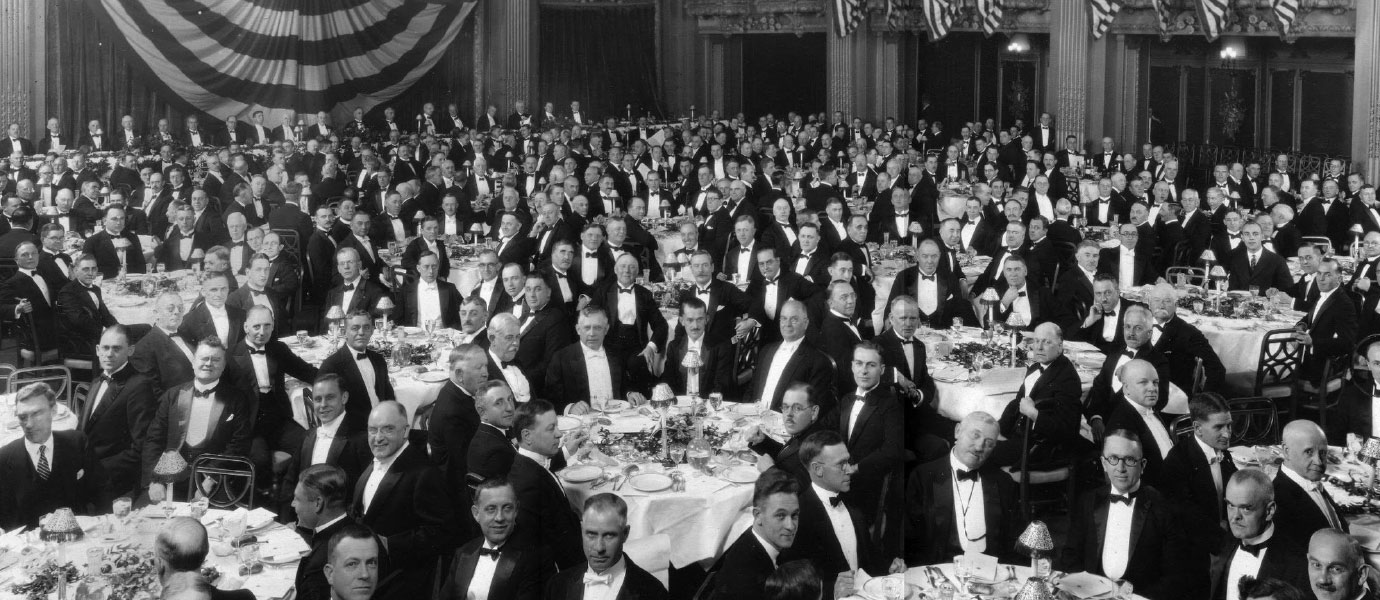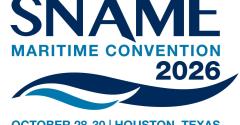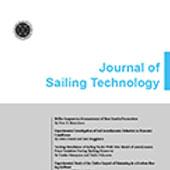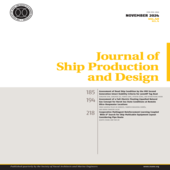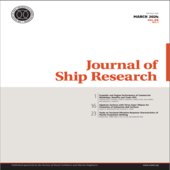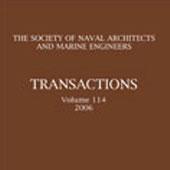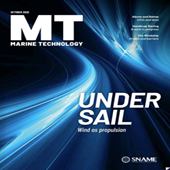Technical and research (T&R) | Bulletins and reports
Common sense suggests that the bearings supporting marine propulsion shafting be aligned so they hold the shaft in a straight line, since offsetting one bearing with respect to another would bend the shaft. Moreover, industrial machinery is typically aligned so that the shafts of the driving and driven machines are collinear [1]. However, this approach is not always appropriate for marine main propulsion shafting because:
a) its bearings move as conditions change, and b) the shafting is never really straight because it deflects under its own weight and the weight of the propeller and other attached components.
Therefore, the vertical and athwartships position of the bearings must be aligned so that the limits established to ensure proper system operation are not exceeded for all normal ship operating conditions. It follows that shaft alignment could also be called bearing alignment since the alignment is a direct result of the position of bearings that support the shafts. Ship operators surveyed by SNAME, as well as the US Coast Guard and the US Navy, expressed a need for a technical reference guide on the alignment of main propulsion shafting.
This document is intended to provide these guidelines for personnel involved in the design, installation, and operation of marine propulsion shaft lines. This guide provides a general overview of shaft alignment for the novice and more detailed information for the person with some knowledge on one facet of shaft alignment that needs more information on another alignment topic. Ship operators surveyed by SNAME, as well as the US Coast Guard and the US Navy, expressed a need for a technical reference guide on the alignment of main propulsion shafting. This document is intended to provide these guidelines for personnel involved in the design, installation, and operation of marine propulsion shaft lines. This guide provides a general overview of shaft alignment for the novice and more detailed information for the person with some knowledge on one facet of shaft alignment that needs more information on another alignment topic.
This T&R Bulletin contains guidelines for using titanium seawater piping in shipboard marine structures. If the decision for the use of titanium for seawater piping systems has been made for weight and space savings, reduction in maintenance and long economical life, this guide presents experience and lessons learned during the design, fabrication, installation, and testing of six large ships with hybrid titanium seawater piping systems.
This T&R Bulletin is designed to illustrate some of the hurdles that will be encountered during the design, manufacturing, installation, and testing and to provide options and solutions. Recommendations for future Research & Development are also included.
T&R Panel M-16 - Propulsion Shafting Systems, felt that a commercial guideline was needed for personnel involved in the design and selection of commercial marine propulsion shaft systems. Therefore, this Bulletin is on shafting systems for commercial vessels over 20 meters in length. This Bulletin provides a series of commercial shafting systems applicable to most commercial ships being designed today. Included in this Bulletin is an appraisal of commonly used shaft line components.
This Bulletin provides the propulsion engineer with the necessary technical background and knowledge to develop a commercial shafting design that meets all design considerations. Guidance is provided so that a design can be transformed into a comprehensive shaft arrangement drawing that allows a shipyard to incorporate the shafting system into the constraints of the build strategy and shipbuilding practice. While specific details of prime movers, gearing, and propulsors are not covered, certain aspects of these components, as they apply to shafting design and details, are presented. Finally, the Bulletin provides guidance for maintenance of the shafting system after the vessel enters service.
T&R Bulletin 4-6 has been superseded by T&R Bulletin 4-10.
Panel 0-23 of the Ship Technical Operations Committee has compiled performance data and descriptions of the potentials and limitations of the basic types of marine paints now in use for the protection of ships' hulls and weather decks. The panel recognizes that considerable variation exists in the performance of paints and coatings based on the same type of vehicle due to differences in processing and formulation. It further recognizes that any advantages obtained by special processing or formulation is a result of research and development by the individual manufacturer, and is a proprietary asset of that company. In the near future, the panel will endeavor to prepare similar tables outlining the properties of some of the newer coatings now undergoing evaluation.
Society of Naval Architects and Marine Engineers, been investigating the use of various insulation materials, and their proper application, for the purpose of obtaining the most satisfactory comfort conditions on shipboard in the most economical manner. In compiling the data on heat transmission through the various types of constructions as given in this Report, the corresponding "U" values have been based on the latest available information and, technical data supplied by the manufacturers of the insulation and sheathing products now available to the industry. It is recognized that the basic "k" values are subject to change as a result of improved manufacturing techniques and more extensive transmission tests. It is requested that proposed revisions to the Text and Tables be referred to SNAME for preparation of future revised editions of this Report.
Abrasive blasting standards established by the Steel Structures Painting Council (SSPC) and the National Association of Corrosion Engineers (NACE) with supplementary photographic illustrations developed by The Corrosion Committee of The Royal Swedish Academy of Engineering Sciences have enjoyed widespread use during the past decade for both industrial and marine applications.
Panel O-28 (Ships' Material) of The Society of Naval Architects and Marine Engineers (SNAME) Technical and Research Program, with the guidance of the Ship Technical Operations Committee, has been investigating the use of various deck coverings and deck preparation for the purpose of determining the most suitable materials for particular shipboard applications. The result of these investigations are contained in this Marine Deck Covering Guide.
